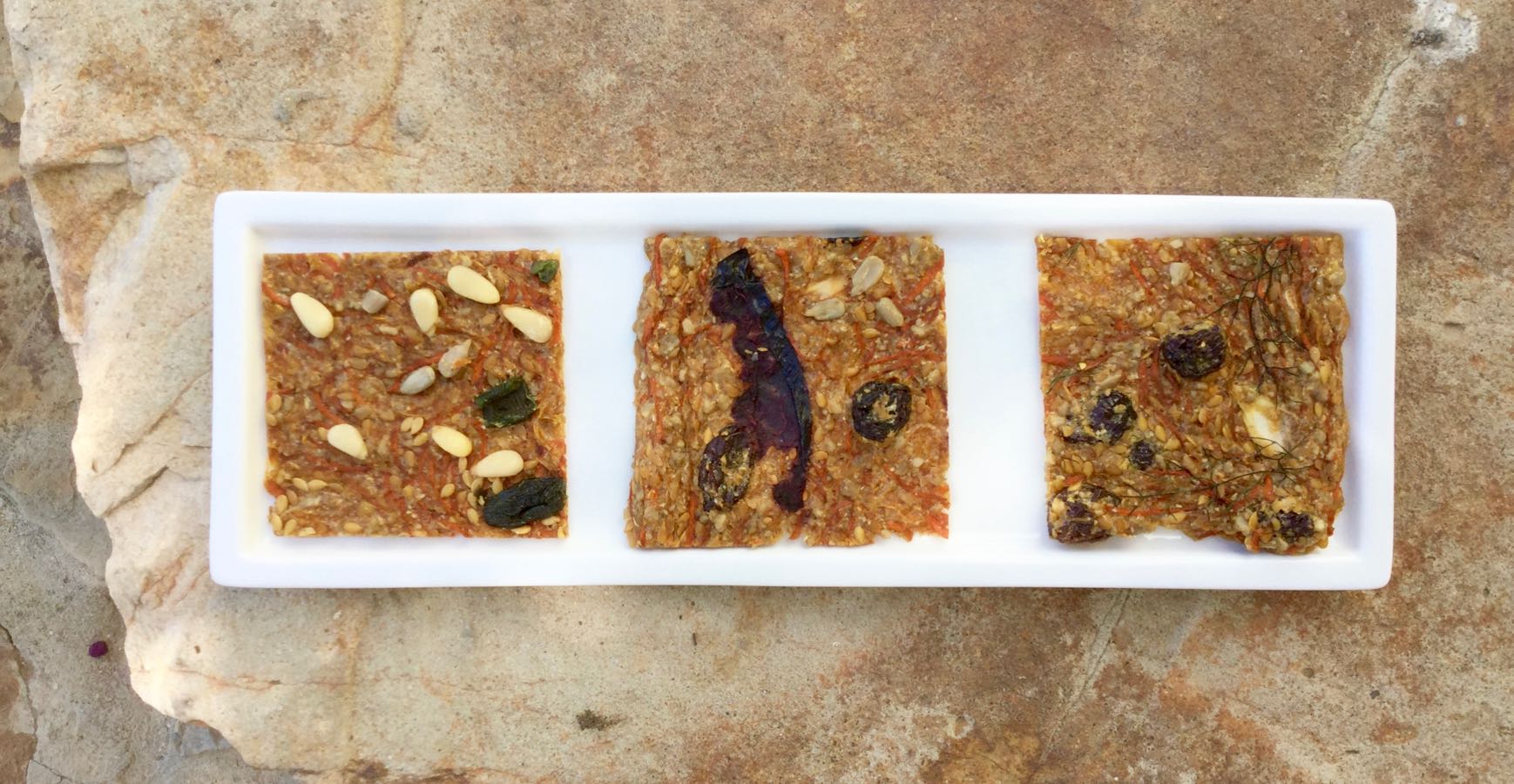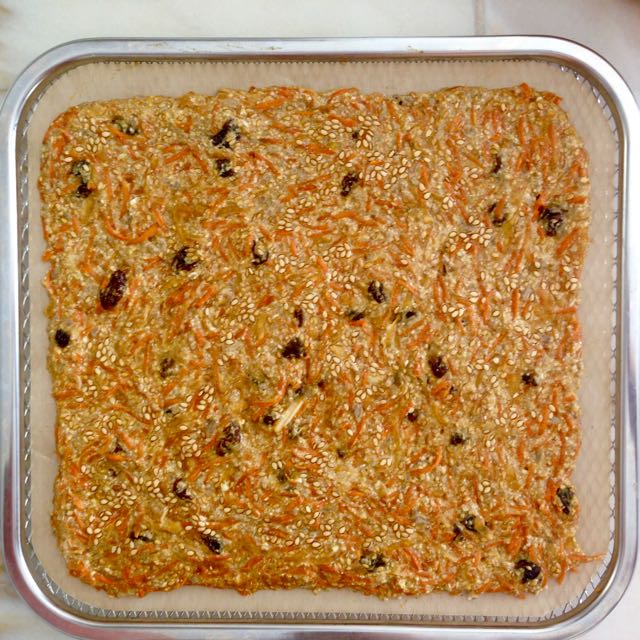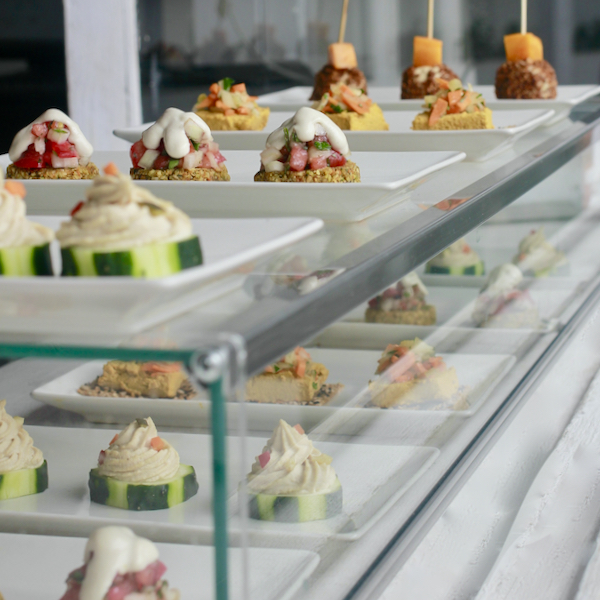
Don’t you miss bread? A good bread? This is one of the most frequent questions coming up when the quotidian cooks discuss Living Foods. To reply we are making a legendary raw bread: the Essene Bread. In today’s chapter on Raw Food we are delighted to share a recipe created by the Argentinian Raw Chef Javier Medvedowsky: a set of variations on his acclaimed Contemporary Essene Bread.
The Essenes were an ascetic Jewish sect that flourished from the 2nd century BCE in areas of Roman Judaea. As they were quite anti-establisment they were object of persecution and ended up living in communities by the Dead Sea desert. To eat in this environment they had to develop what we would call survival techniques. The culinary legend tells they were vegetarian and made bread without the use of fire. A bread made of seeds, herbs and berries that was “cooked” on flat stones with the heat of the desert’s sun.

Leaving myths aside, Essene uncooked breads are becoming more and more available in Raw Food websites and specialized stores. Our favourite one is Javier Medvedowsky’s. His recipe combines two main seeds, buckwheat and golden flaxseeds with carrot and onion to create a crunchy base. On top of it we can play with accents like nuts, herbs, berries or fruits. We decided to explore it and made a number of variations to show you the recipe’s potential.
Why is it so interesting? This recipe is a beautiful example of the power of Raw and Living foods. Both seeds used for the bread dough, buckwheat and flaxseeds are full of essential nutrients (check the links to see the details). Their properties are fully preserved by the dehydration technique of raw cooking. The vegetables, herbs, nuts and fruits round it up creating a culinary treasure. When we eat this bread we are celebrating a ritual of health. And it tastes so good!

The recipe is easy to work (follow our culinary tips) and once you have the dough ready you can add your favorite combinations of herbs, nuts and fruits. In the picture you can see the basic recipe dough ready to go to the dehydrator.
The quotidian cooks have been playing with the recipe for a while and here are our suggestions:
- With herbs: add fresh rosemary or dill leaves.
- With fruits: add thin slices of peach or red plum.
- With nuts: add pinenuts and pieces of olives.
- Combine cilantro and thin stripes of ginger.

The Essene bread pairs beautifully with patés or vegetable creams like our Zuchinni Hummus and it is ideal for sandwiches. Store in a sealed jar and it will keep for one week without loosing freshness or texture. Take advantage of this recipe to boost your creativity in the kitchen. Enjoy it!
- ½ cup of buckwheat seeds
- ½ cup of golden flax seeds
- ⅓ cup of sunflower seeds
- 1 lb carrot
- 1 lb onion
- 60 ml of tamari
- 60 ml of olive oil
- 70 g-1/3 cup raisins
- Variations with herbs : fennel , rosemary , cilantro
- Variations with fruit : peach , plum
- Variations with other ingredients : ginger , olives , pine nuts , cherry tomatoes
- Soak flaxseeds and buckwheat for four hours in separate bowls with half a liter of mineral water per container.
- Rinse and drain repeatedly buckwheat seeds until water is clean and set aside.
- Place soaked flaxseeds in a fine sieve and whirl with a spatula to collect the mucilage. Rinse and drain and set aside.
- Grate carrots and cut onions into a julienne as thin as possible.
- In a large bowl mix the onion and carrot with tamari, oil and raisins and mix. Grind flaxseeds and buckwheat in a food processor and add to the mixture. Make sure flaxseed are broken. If you do not have a processor you can use a 50% of sound flaxseeds.
- Coarsely grind the sunflower seeds in the processor and add to the bowl.
- Work the dough in the same bowl until all ingredients are well blended checking that all liquids have been incorporated.
- Spread the dough on silicon sheets in a very thin layer of max ⅓ inch. The recipe yields three loaves of approximately 15 x 15 inches each.
- Add the herbs, fruits or ingredients you have selected to enrich the base recipe.
- Dehydrate at 115 °F for 12 hours, then turn the loaves removing the silicone sheets. Continue dehydrating for about 10 hours or until dry and crisp.
It is very important to cut the onion into julienne strips as thin as possible. If you have a processor use the disk with a finer cut.
Process seeds until you see flaxseeds broken. If you do not have a processor you can use a 50 % ground flaxseeds .
Fruits should be sliced very thin. Add them by pressing lightly on the dough.
In order to get a crispy texture check the loaves during the last two hours and add more time of dehydration if needed.











Let there be light
Light it is! Thank you!